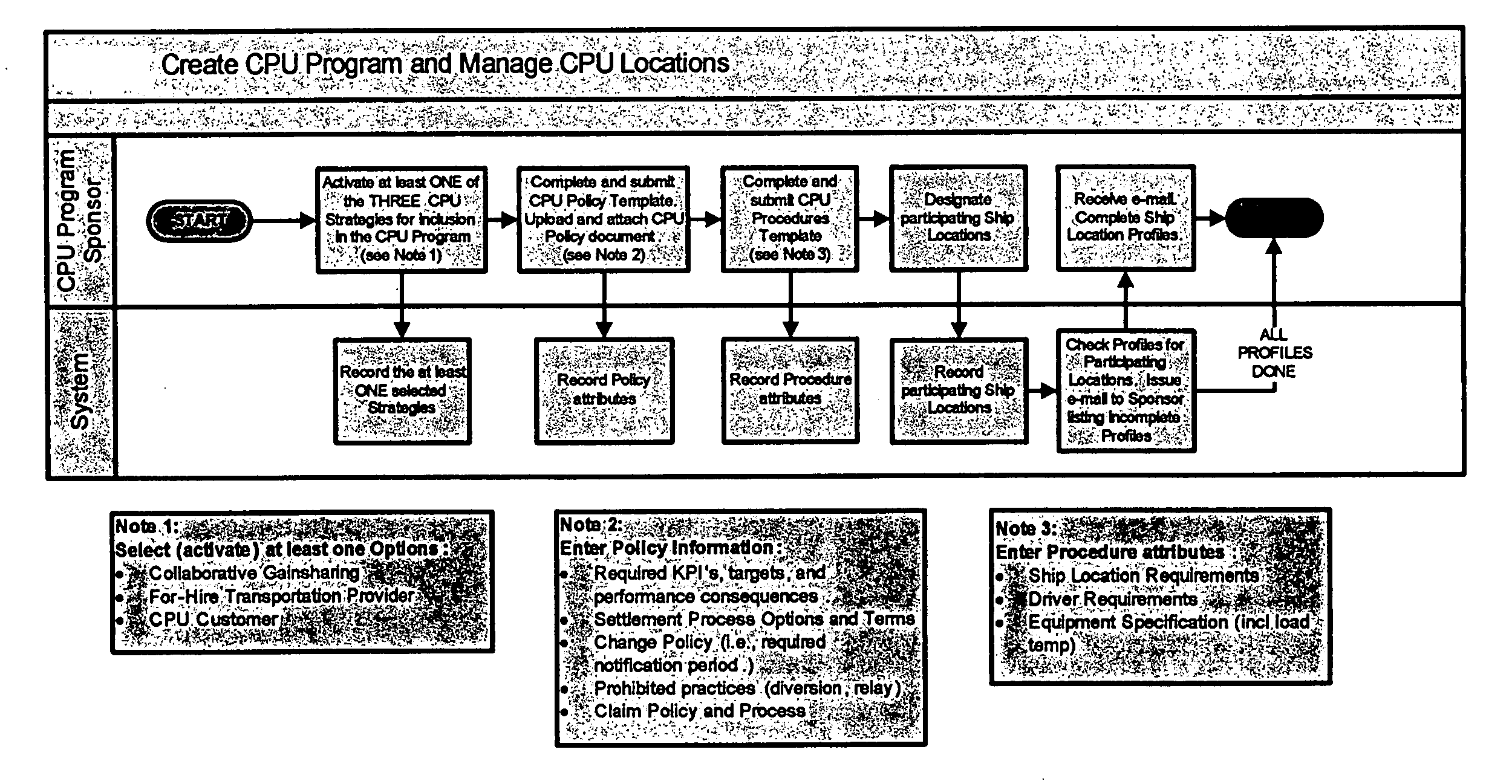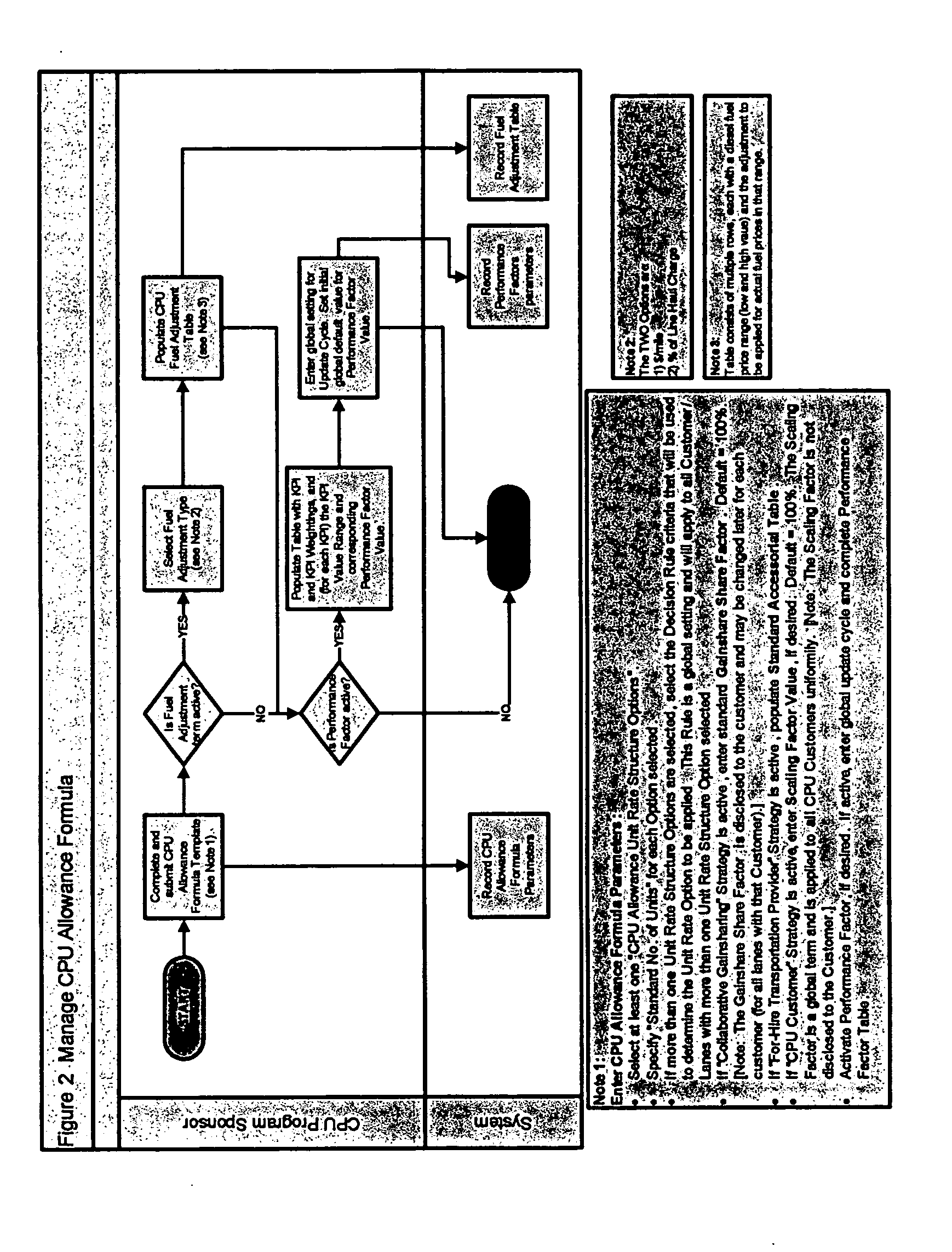System and method for effectuating the creation and management of customer pick-up/backhaul programs between buyers and sellers in a supply community
a technology of supply community and customer pickup, applied in the field of cooperative transportation efficiency programs between buyers and sellers in the supply community, can solve the problems of unworkable current processes available to customers for discovering attractive cpu opportunities, negative impact on the quality of business relationships, and unfavorable mutual agreement, so as to facilitate mutual agreement and quick and easy identification
- Summary
- Abstract
- Description
- Claims
- Application Information
AI Technical Summary
Benefits of technology
Problems solved by technology
Method used
Image
Examples
Embodiment Construction
[0031] A supplier that desires to offer CPU as an option to its customers first creates a CPU Program by specifying attributes that enumerate their CPU strategy, policies, procedures (including shipment specification), and structure of the CPU Allowance Formula, and by designating which of their SDC shipping locations (city, state, and zip code) are available to participate in CPU, as shown in FIG. 1. In creating a CPU Program, the supplier becomes a CPU Program Sponsor. In this creation process step, the CPU Program Sponsor must make two key decisions.
[0032] First, the CPU Program Sponsor must decide which CPU strategies to offer to its customers. The invention can support any kind of strategic relationship structure. By way of example, three CPU Strategy Options that can be enabled in the invention are:
[0033] 1) Collaborative Gainsharing: In this strategy option, the expected net combined cost savings for converting to CPU is shared between the two partners so that both earn a r...
PUM
 Login to View More
Login to View More Abstract
Description
Claims
Application Information
 Login to View More
Login to View More - R&D
- Intellectual Property
- Life Sciences
- Materials
- Tech Scout
- Unparalleled Data Quality
- Higher Quality Content
- 60% Fewer Hallucinations
Browse by: Latest US Patents, China's latest patents, Technical Efficacy Thesaurus, Application Domain, Technology Topic, Popular Technical Reports.
© 2025 PatSnap. All rights reserved.Legal|Privacy policy|Modern Slavery Act Transparency Statement|Sitemap|About US| Contact US: help@patsnap.com



